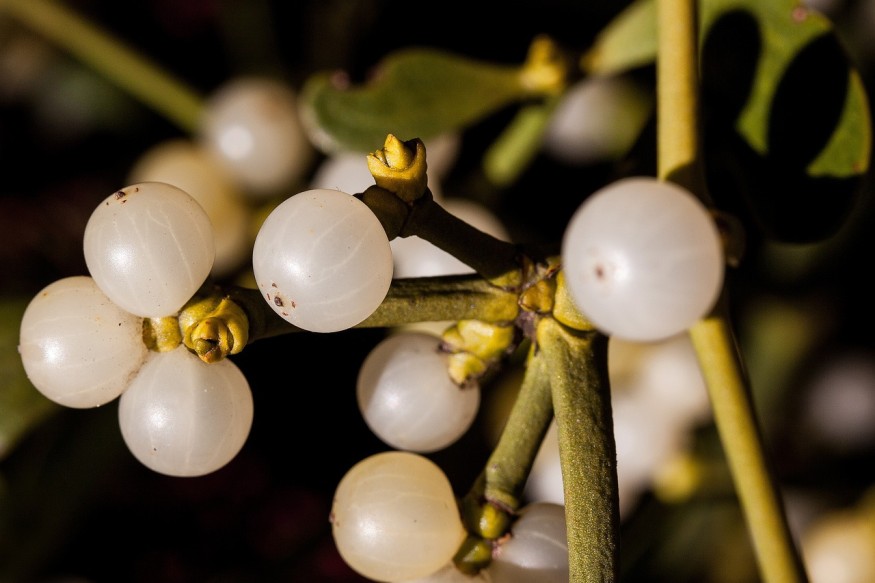After over 2,000 years, scientists have finally confirmed the life-saving powers of the parasitic plant mistletoe that Celtic Druids once took advantage of. Researchers at McGill University and the Max Planck Institute found that the glue-like thread from the mistletoe berries, known as viscin, was strong enough to seal wounds.
When the viscin fibers were wet, they created thin films that dried into stiff and translucent free-standing films that adhered to surfaces. Nils Horbelt, the first author of the study, claimed in a press release that he wore the glue on his skin for three days and discovered it was flexible enough to move without breaking.

Wound Sealant From Mistletoe Berries
Mistletoe and its berries are poisonous when consumed but safe to apply on the skin. As per MailOnline's report, each mistletoe berry generates around six feet of that glue-like thread that allows the plant's seeds to adhere and infect the host plant.
Scientists created tiny wounds on nonliving pig skin with a razor blade to test the glue and found that the wounds were sealed using the viscin that allows it to heal. They discovered that the silky and glossy sealant stayed in place, kept the incisions closed, and remained securely attached to the skin for three days. On the other hand, those wounds that were not sealed with viscin opened.
The team wrote in their study that the sealant remained flexible, allowing for unfettered mobility while doing daily duties, and it was even resistant to a quick rinse with water. Friction might be used to remove the tissue seal by touching the sealed region.
The next step for the researchers is to understand better the chemistry of this swellable, very sticky substance so they can reproduce the procedure. Matthew Harrington, a senior study author, noted that viscin must be significant in the evolutionary sense, given its ability to stick to wood and skin or feathers.
Although it is harder to explain its adherence to synthetic surfaces, like plastics, glass, and metal alloys, viscin may represent a highly versatile adhesion that makes it so interesting to explore its chemistry. The team works on manufacturing viscin into a commercial adhesive that can be useful in many industries in the future.
They discussed their findings in full in the study, titled "Mistletoe Viscin: A Hygro- And Mechano-responsive Cellulose-based Adhesive for Diverse Material Applications," published in PNAS Nexus.
Ancient Civilizations Have Been Using Viscin-Based Glue From Mistletoe Berries
The ancient Greeks and Romans utilized the berries for various purposes, including bird catching and skin ulcer treatment, MailOnline reported. Likewise, the Celtic Druids held mistletoe in high regard. In the first century, the Druids were the first to employ the plant as a holy emblem, but the notion swiftly spread to other cultures.
Records also show that in Norse culture, mistletoe was a symbol of love and peace. According to tradition, Odin's son Baldur died and was revived by mistletoe.
Mistletoe's association with fertility and vigor persisted throughout the Middle Ages, eventually making its way into Christmas by the 18th century. It's unclear how it turned from a holy plant to Christmas adornment.
RELATED ARTICLE : Wild Mistletoe: A Parasite Called a Kissing Plant for the Holidays But Named From Bird Poop
Check out more news and information on Materials Science in Science Times.
© 2025 ScienceTimes.com All rights reserved. Do not reproduce without permission. The window to the world of Science Times.










